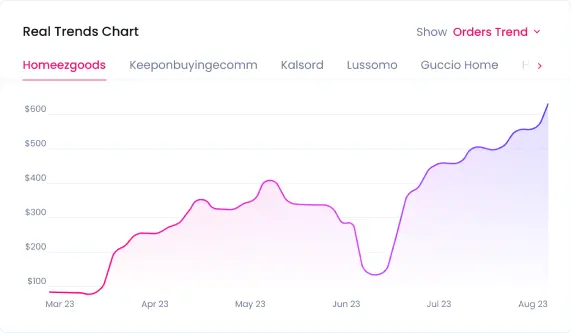Minimum Investment Dropshipping
Contents
-c4514.jpg)
Imagine selling products you have never handled, from countries you have never visited, to customers you have never met, from your MacBook, and without ever leaving your house. Welcome to the world of dropshipping.
What is minimum investment dropshipping? If you are wondering how much it costs to get your dropshipping store off the ground, this article will address the most common questions, help you get started the right way, and help you make the most out of your budget.
Dropshipping is a darling of the e-commerce world, partly due to its alluring, get-rich-quick feel and the low entry barriers. Thousands of people have launched fledgling companies right in their homes, with barely any capital injection. Of course, it’s nothing close to a get rich quick business.


What is Minimum Investment Dropshipping?
Because of the low entry barriers, plenty of people have taken a stab at dropshipping and unfortunately, the shores of the ecommerce world are strewn with wrecks and debris of dropshipping businesses that either never got off to a good start or just couldn’t get it right.
But does this mean that dropshipping is dead and that you shouldn’t take the voyage? The answer is a resounding no.
By taking advantage of free trials and starter packs, you can set up a dropshipping business with virtually no money. You will just have to set aside some time every day, hope against hope that everything goes well, and presto! You have a dropshipping store. This, of course, isn’t the best strategy and we’ll offer a few tips in this article to help you get started the right way.
We’ve discussed a detailed breakdown of how much money (as little as $40) you’d need to spend before launching your ecommerce website. You can consider any of the three options discussed here depending on your budget or whether you just want to give it a trial run.
Dropshipping is a tried and tested business and with the right mix of marketing tactics, products, and customer service, many have reaped handsome profits.
Here’s a visual representation of the dropshipping business model to give you a better understanding of why you’ll need to do a little more than just setting up your store to increase your chances of success.

The essence of dropshipping is the fact that your store never has to own or keep inventory and the fact that it will only serve as a middleman.
But why would customers buy from your store instead of just going directly to the big stores such as Amazon and Alibaba which will almost always offer lower prices and faster shipping?
The answer may surprise you.
The sorts of people that come across a product and then go online to research the absolute best deal for it before they make a purchase are NOT your customers. Dropshipping is designed for the impulsive, spur-of-the-moment shoppers who are intrigued by a product the moment they spot it online and want to order it right away. Retail statistics show that this group of people comprise nearly 80% of young shoppers.
Therefore, the most successful dropshipping businesses are built around these groups of customers, the ones that can’t resist the lure of an impulsive purchase. With the right imagery, copy, and call-to-action, you can attract prospects to your store and convert them to actual sales.
The Covid-19 pandemic has inadvertently led to more impulsive online purchases. As more people remained confined to their houses for extended periods, they were compelled to make online purchases for their usual supplies. Yet many others also turned to online shopping to fill the hole, by scrolling their screens all day and dealing with the temptation to purchase a product in just two mouse clicks.
Recurring Monthly Costs for Dropshipping Businesses
Domain Name
One of the fastest ways to launch an ecommerce website is to use an ecommerce website such as Shopify. You can get a custom domain name from Shopify and use the apps and tools to help boost your sales.
Shopify provides a free myshopify.com on sign up but it isn’t customizable since the brand name, Shopify will always appear in the URL, which can impact your SEO efforts. You can also purchase a domain name as part of the plan you select and all the search engine results will go to your domain name instead of a Shopify page.
If you already have a domain name, then the respective maintenance fees with your provider will apply. Hosting your domain at Shopify will cost around $11 a year while other service providers will host your domain name at a cost of anywhere from $1.00 to around $2.99 per month.
Of course, you’ll be lured into spending more money on getting the “perfect domain” but it’s always prudent to keep your startup costs low. At any rate, the quality of your ecommerce store is far more important than the name.
Shopify Plan/Website
Shopify lets you run a two-week free trial of your ecommerce shop without having to supply your credit card details. After that, you can select from one of three plans:

It’s generally not recommended to go with the advanced package at the initial stages, especially if you have no experience with building and growing ecommerce sites.
Take advantage of the free trial to set up your ecommerce store and get a feel of the actual work and processes it will involve. Once set up, make a mock purchase from your store to get a sense of what your customers will be going through.
Like many other ecommerce platforms and content management systems, Shopify provides free themes and templates which you can customize and use to design your store. You won’t need to build your ecommerce site from scratch since the templates will help you design a beautiful store without having to learn any coding or web design skills.
Shopify Tips to Help Get Your Store to a Flying Start
There are a lot of tips and tricks you can execute to give your store a great start, and without having to spend any extra money.
The first, and perhaps one of the most crucial elements, is to have a mobile-first approach when setting up your store. There are more than 3.5 billion smartphone users in the world and they spend a few hours every day on their phones. Therefore, the first time a customer comes across your store will probably be on a mobile phone.
Always ensure your website is mobile-focused. What are the odds you’ll provide your payment information to an ecommerce site after an unexpected crash or an ecommerce store with super slow loading speeds? Shoppers will always lose confidence in such a store or just get frustrated and leave a buggy and unstable ecommerce website.
Other helpful tips include:
- Use minimal text and more images
- Have large and clear CTAs
- Offer more products (but don’t try to sell everything under the Sun)
- Get high-quality images
- Include clear policy information
- Have few or no pop-ups
Dropshipping Tools
Shopify has numerous tools such as plugins and integrations that can amplify your store or solve many problems. Try out different tools to solve marketing, payment, social media, reviews, inventory management, and other operational issues, then keep the ones that work and discard the rest.
Other tools such as Sell The Trend help you find and sell the right goods, which is absolutely critical. You certainly don’t want to find yourself marketing products that don’t sell well or ones that have a ton of competition. Sell The Trend is an all-in-one dropshipping platform designed to help store owners find lucrative and trending products using AI technology.
In a nutshell, Sell The Trend provides the following three key benefits:

Source: Sell The Trend
Use the 7-day free trial period to experiment with it and discover the best products for your dropshipping site. If it’s a fit, you can select one of two available plans; a monthly $39.97 plan and a yearly $32.97 per-month plan. The yearly plan comes with an offer of two free months, which will come in handy down the road should your eCommerce store take off in its first year of operation.
Marketing Costs
Once your store is up and running, you’ll need to generate traffic, leads, and ultimately, sales. While setting your store might cost next to nothing, it’s absolutely critical to set aside an initial marketing budget to spend on ads and driving traffic to your store until you begin to generate enough sales revenues.
One of the least expensive ways is to begin with posting organic content that promotes your store on your social media platforms. These can be high-quality product images, relevant videos, and engaging captions. Get as personal as you can while also staying within professional lines.
However, original posts on your social media pages can only go so far. Putting a little bit of money behind your posts can help you reach a far much larger audience. Other marketing strategies that can quickly help you get your products in front of more potential customers include:
- Influencer marketing
- Email marketing campaigns
- Paid search
- Adding an SEO-optimized blog
- Paid advertisements such as Facebook ads.
Shopify integrates quite well with Facebook ads. All you have to do is set up a Facebook Business Manager Account and then install the Facebook pixel tool, which serves as a connection between your website and your Facebook ads. And the good news is that you won’t have to dig your hands into a web of software code to set it up.
Additional Costs to Consider
One of the first steps to undertake before setting up your dropshipping business is to figure out the paperwork and some of the legal requirements for setting up a business wherever you are located.
You may need to pay for a business license, a seller’s permit, or a sales tax permit if you are going to sell products that attract a sales tax. Contact your local commerce or local agency to get more information.
Other potential costs may come from your suppliers, who are one of the most crucial elements of your dropshipping business. Some suppliers charge a fee to use their dropshipping services, which would then eat into your profits. Therefore, finding the right suppliers can save you both time and money in the long run.
So what is the minimum investment needed to start a successful dropshipping business?
How much would you need to get your eCommerce store off the ground in, say, your first month of operation? You’ll require a minimum amount to set up your store and some extra amount to test your end-to-end sales process of the products you intend to sell. That means placing one or two orders to get a feel of what your customers are likely to experience.
Here’s how that math would look like in your first month:
Option 1. Setting up shop:
Basic Shopify = $29
Domain name hosting = $11 (year)
Total = $40, give or take.
Option 2. Setting up, validating your sales process, identifying the perfect suppliers:
Basic Shopify = $29
Domain name hosting = $11 (year)
Sell The Trend Subscription = $39.97
Placing two orders = $100
Total = $180, give or take.
Option 3. First official month with an ad campaign budget:
Basic Shopify = $29
Domain name hosting = $11 (year)
Sell The Trend Subscription = $39.97
Facebook ads = $300 (around $5-10 per day)
Total = $380, give or take.
Note that you can use dropshipping automation software to handle operational issues such as order fulfillment, product importing, and marketing tools such as Facebook audience builders and video ads creators, all of which are available with Sell The Trend. These often come in handy as your sales revenues grow.
Remember, the first two options costs will only get your foot in the door. A huge chunk of your initial expenses should go to marketing. Dropshipping is now hugely popular in the eCommerce world and there’s a zero chance that you’ll find yourself operating in anything close to a monopoly.
Fortunately, many dropshipping businesses already in the market don’t apply the right marketing tactics. Sell The Trend helps you stand out within the clamor and marketing noise and close more sales.









